
abC Team
总负责人 / 艺术总监:周玥
展会统筹:刘小门
项目管理:杨丹 / 许珂 / 陈家心
商务/媒体拓展:杨子艺
项目执行:郑云沧
公教活动:陈家心 / 胡沁迪
夢廠出版负责人:胡沁迪
网站设计:北 鸥
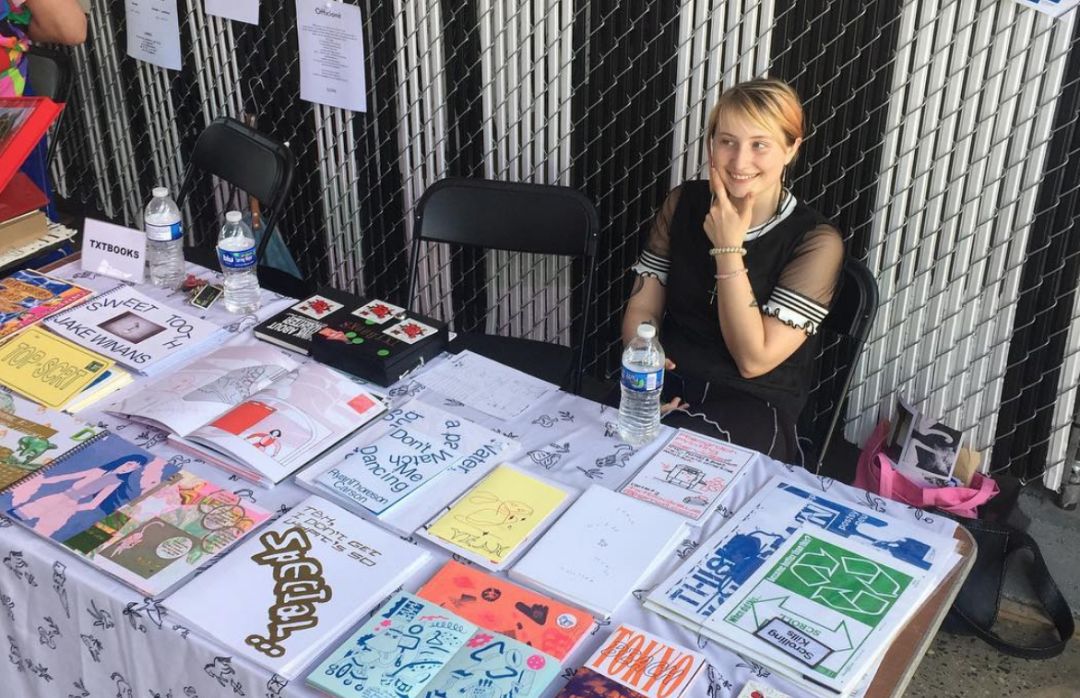
abC Interview with TXTbooks's Founder
Nichole Shinny
Editor: Ticket
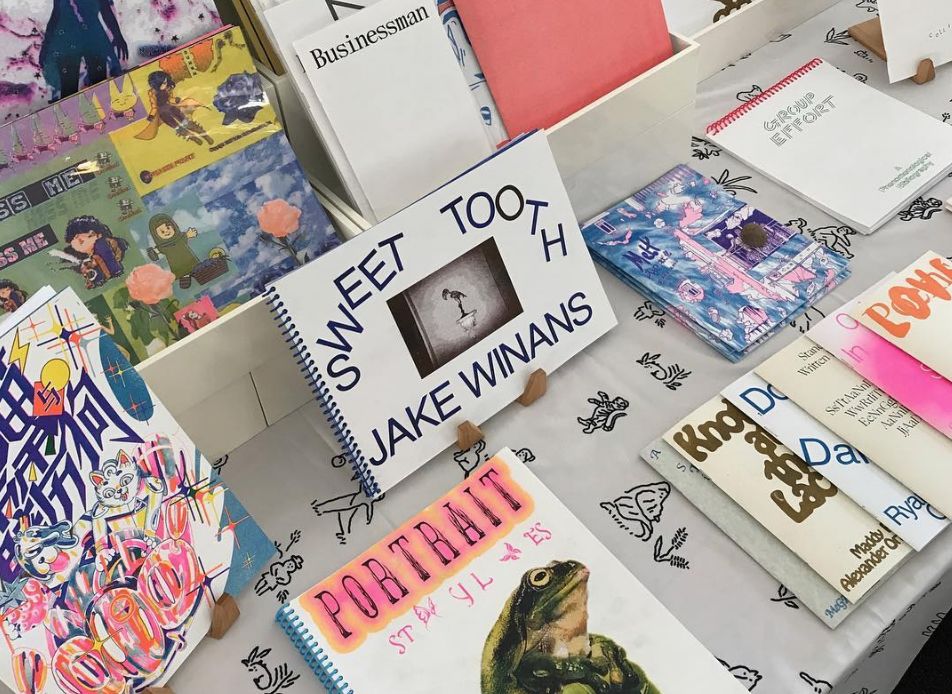
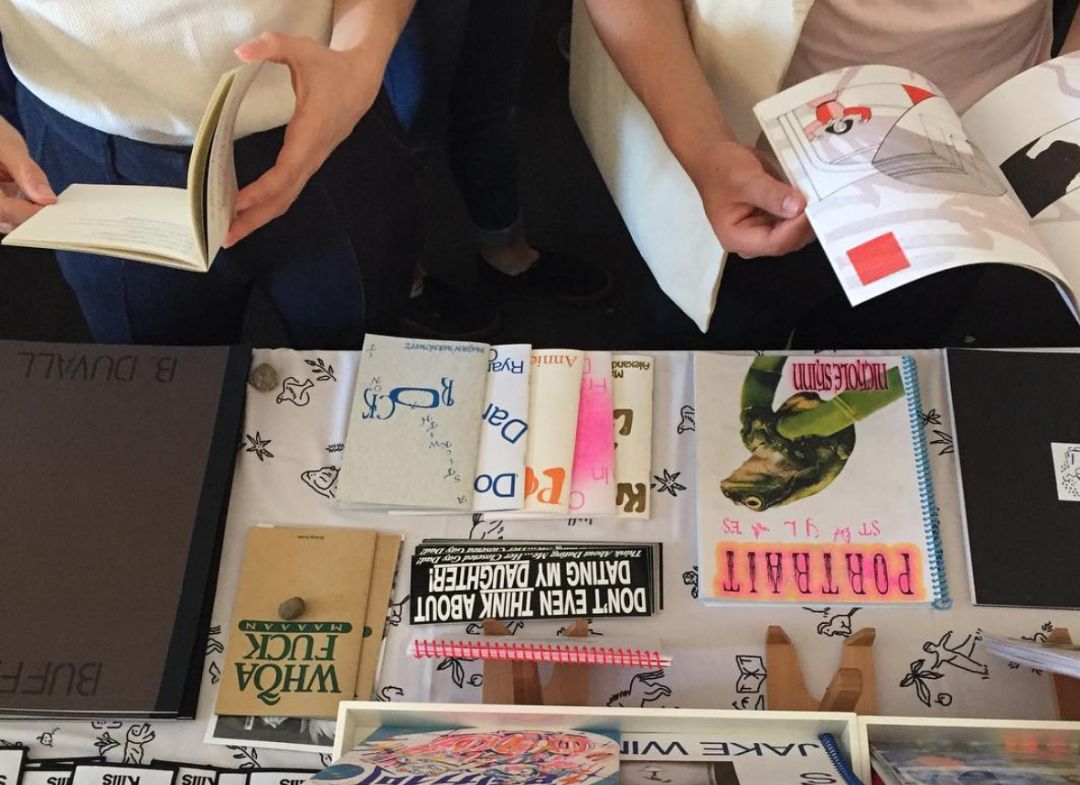
Could you tell me a bit about yourself and your background?
Nichole: My name is Nichole Shinn and I’m an artist living and working in Brooklyn, NY. I grew up in Austin, TX and moved to Brooklyn to study painting at Pratt Institute. I graduated from Pratt with a BFA in 2014. In 2014 I co-founded TXTbooks as well as worked for the artist Takashi Murakami for over two years post-graduation. I’m just starting to come into my own identity as an artist the last year or so.
Also I really curious about the story you guys starting txt at that time, could you talk about that?
Nichole: There’s four of us who started TXTbooks. Robert Blair, Thomas Colligan, Kurt Woerpel and I. They had all been in the graphic design department and took a class called Independent Publishing. This class offered intro to zine making/artist’s books and Risograph printing. They all fell in love with Riso and introduced me and the love grew. We started making our zines as a collective together at Pratt for the first few months and then bought our own machine later that year from an old professor and made it official. We’ve grown a lot from making small goofy zines to more collaborative artist books.
How is your coordination or division of running the publishing house?
Nichole: TXTbooks responsibilities vary from project to project overall, but on the back-end Kurt is mostly the Riso technician, supplies coordinator and general manager of the inner workings of the project. Robert and Thomas both do a lot of the artist outreach and project ideas in terms of structure, as well as some more of the logistics of reaching out to stores and applying for fairs. I do a lot of the curation for single-artist projects and the bulk of ongoing printing for the projects and working directly with artists to see the projects finalized. We all shift these things around when someone can’t do it, and meet and brainstorm together new project ideas. Especially for tight deadlines, we all work together to finish everything.
What makes txt different from other publishers? What is your attitude to make books? And how would you choose the artists you want to cooperate? I can always see some naughty and humor in your publications.
Nichole: I think what separates us from other publishers is that we don’t function as a curation of a particular aesthetic. Since there’s four of us, our tastes all vary and we don’t focus on just illustration, design, writing or photo. We kind of blend all of these styles. We also try to only work with artists who have not made books or used Riso before to see their work in a new way (as a general guiding principal which we sometimes bend). Our attitude is very different between our own personal works and those with other artists. When we work with artist’s we tend to set some guidelines and color restrictions, while for our own projects we can go a little overboard (speaking personally) on format. We don’t tell artist’s what to do and try to give them as much freedom to make a project they way they want, so that they can experiment and see their work differently. We only limit color/size/page count, but do not deny certain ideas. Overall we like to work with artists whose work has some sense of humor since we all tend to include it in our own works. The process is not perfect or predictable so we want the work to pair nicely with that attitude. It also makes it much more fun to work with if the project has some underlying humor. We don’t ever want TXTbooks to be seen as too serious.

I am interested in the series “Chapbook Relay“, could you tell me your ideas related to that?
Nichole: As designers we wanted to come up with a way to showcase experimental design with really good writing. Since a lot of poets self-publish their work, poetry chapbooks tend to be made to function as a fast method of consumption but not always a more formal piece of design.
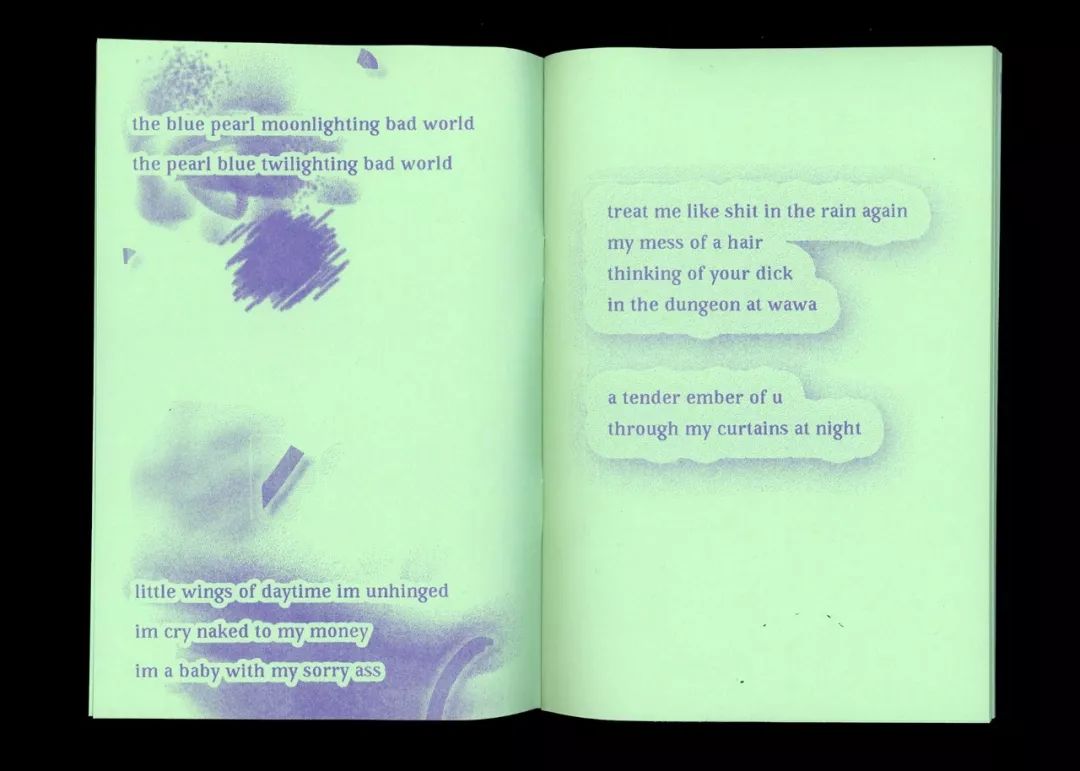
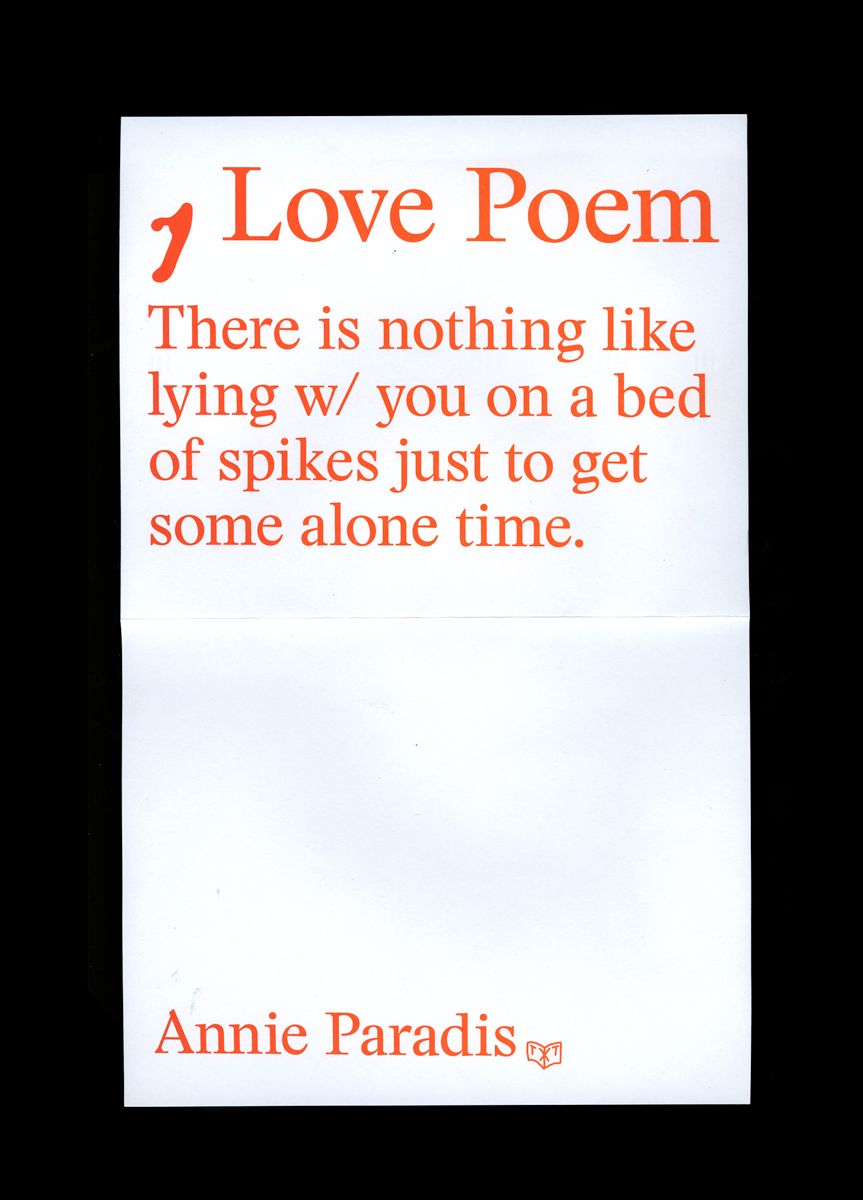
A poet friend had asked us to design a chapbook for them, so Kurt and Robert came up with the Chapbook Relay idea. We knew a lot of poets from school but didn’t know the community well enough to continue the project on our own, so they thought it would be an interesting method if we included the poets as editors and curators in this ongoing project to expand and grow. The premise is that we each reached out to a poet we knew/liked and then individually design that chapbook. The poet would also invite another poet to edit their work. The editors would then be the next in the series and invite someone new to edit their works and continue the chain. `it's a nice way to work because it becomes more open, participatory, and surprising -- it gives the project a nice life! And poetry is fun to design for and poets are a lot of fun to work with!
How do you arrange your schedule about the publishing and your personal works?
Nichole: It can be difficult at times to separate the two schedules, as Kurt, Rob and I all work freelance. Kurt and I work out of our studio in Bushwick most of the week, and it can be hard to coordinate our personal freelance work with TXTbooks work. We do try to iterate that it is a passion project, as we cannot afford to do this work as our only work. For the first few years even we all had full-time jobs and it made it even more difficult to publish as many works as we do now. The past year or so we decided to have more outside artists published when weighed to our own personal publications. It balances our project so much more and has expanded it beyond just a collective. Although for me personally Riso is an extension of my own artistic practice at this point, and I try to use the Riso as much as I can.
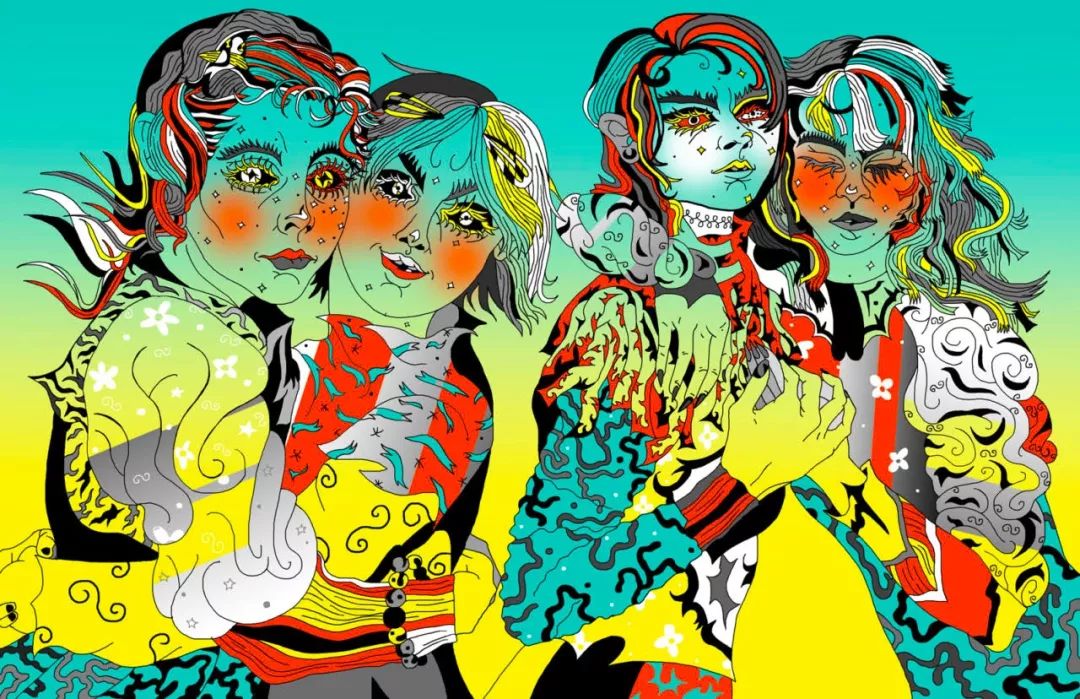
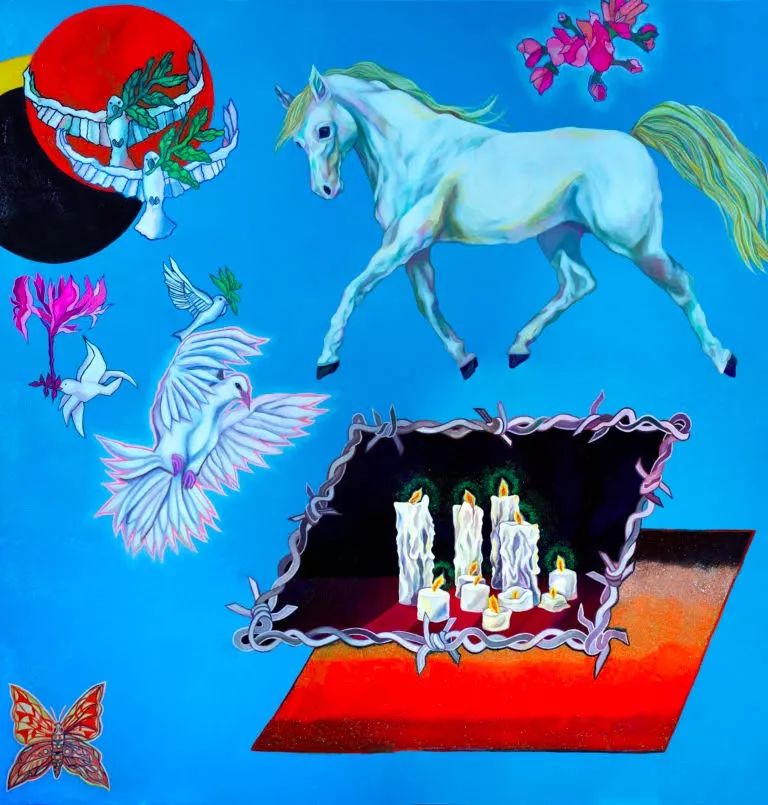
I am really into your works, there are always some fantastic portraits of girls in your painting, also some symbol beyond the real world. What do they mean?(feminism or identity issue?)What’s the thing you actually pay attention to?And how does it influence your art practice?
Nichole: Thank you for the kind words! I will try to explain my work the best I can at the moment. Mostly I focus on the fantasy projected onto the feminine identity. There is a conflicted relationship between empowerment and degradation within feminine representation in our culture. This is mostly within figurative forms, psychological/emotional stereotypes and symbolic narratives. My books and digital works explore this in relation to internet communities around anime, video games and social forums dominated by masculine identity. My paintings tend to focus more on how this female portrayal and projection is internalized. Representing my inner reflections in a spiritualistic and obscured definition. For my art practice, I feel that I tend to use the book format to lay my reflections on this idea out either in a research format or a rendering of tangential ideations. This research and experimentation through books informs my convictions in my painting and digital works. I think fantasy is one of the best coping outlets for us as humans and it’s important to understand, for me personally, where femininity is or isn’t respected.
What are you doing recently or next step?
Nichole: For me personally, my next goal is to finish a couple different series of paintings and have some gallery shows throughout the next year. I also recently have just gotten back into making ceramics, and plan on building this practice into my larger bodies of works as well. There are also some longterm book projects that are going to debut at TCAF in March (hopefully). For TXTbooks we have a really awesome collaboration with Colorama from Berlin, to host the next "Clubhouse" project (a call-and response group comic project) in our studio for Comic Arts Brooklyn. As well as working on our next series of Publications for the spring next year. We have taught some classes and workshops in the past and want to continue these as soon as possible.

Could you talk about the Brooklyn Art Book Fair that you hosted? What is its main focus? Would you add your own interest preferences to that? About Brooklyn's self-publishing, how is the environment and current situation?
Nichole: So we actually did not coordinate or host the Brooklyn Art Book Fair. Our friends from Endless Editions (Paul John, Hahhah Coleman, and many more) do all of that work. We did the visual identity and all of the graphic design including re-doing the website and all print related material for the fair.
The BABF is amazing because it focuses on showcasing Brooklyn based publishers and building strength in this community. It also has an ongoing performance and poetry reading event that is a great outlet for Brooklyn writers. What makes it special is it is inside of a public pool gym and is easily accessible for people who may not know or be initially interested in art books, and it's free for the exhibitors which is great since some fairs can be very expensive in some cases. It doesn’t have the same institutional bias as some other fairs since it's more grassroots, so more people feel it is something for them to feel comfortable enjoying. Brooklyn’s self-publishing community is very strong, and we all help each other when necessary. We trade equipment and send each other jobs. There is a lot of variation and style as well.
Thank you !
More Nichole Shinny's works: